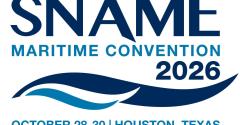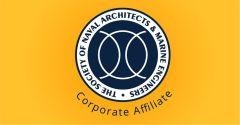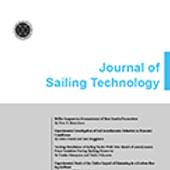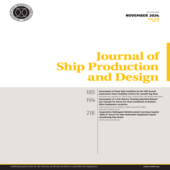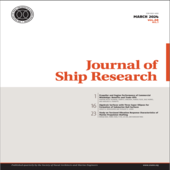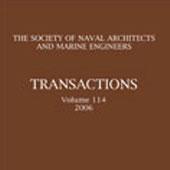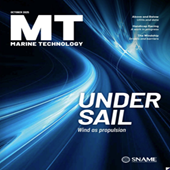Technical and research (T&R) | Bulletins and reports
Since World War II, the technology of tank coatings has evolved from nearly non-existent to systems that will last the life of the vessel. We have available today a host of standards including surface preparation, inspection, application methods, and types of coatings for specific services. Coating manufacturers have developed particular generic types of coatings that can withstand a given environment over various periods of service life. Unfortunately, however, although the technology is known, results are not always satisfactory due to many factors that can influence the outcome if not attended to properly. It is the purpose of this Guide to point out the pitfalls and potential problems that are inherent in any major tank coating jab. By being aware of such difficulties, an Owner and/or Specifier can include in the specifications and procurement documents safeguards which will enhance the outcome. The Guide is intended as a resource for all those concerned with tank coating.
SNAME Panel 0-23, Ship’s Paints has members that represent ship owners, builders, point & coating manufacturers, contractor applicators, and specifiers. Thus, this Guide includes information provided from all aspects of the marine coatings industry.
Manufacturers of advanced surface craft now produce vehicles that should be viable competitors in the field of mass transportation. Many have not been because prospective buyers have not had sufficient definitive information to make sound, comparative decisions concerning the craft for their particular set of conditions. That is, the general information level plus the manufacturer’s promotional material has not been sufficient for prospective buyers to accurately assess the probable economic results of utilizing such craft. The models presented in this report were developed to help meet that need. Although developed specifically for advanced surface craft it is considered that the models are fully applicable to other vehicles, including displacement hulls.
This guide provides definitive information in the preparation for the conduct of Gas Trials for LNG Vessels. Such trials are intended to prove the safe and adequate operation of all systems and their components involved with or pertaining to the shipboard handling, stowage, disposal, etc. of LNG particularly those systems components not otherwise covered by other codes. It is meant to be a comprehensive guide covering all varieties of containment system designs and therefore must be used with the caution that all items contained within the Guide may not be fully pertinent to a particular design.
This report presents the final results of a research program sponsored by the MS-3 Panel on Mobile Ocean platforms, Society Of Naval Architects and Marine Engineers (SNAME), to study wind effects on semisubmersible offshore drilling vessels.
T&R Bulletin 5-4 (2020) supersedes the existing T&R Bulletin 5-4 (1988).
This bulletin updates the 1988 SNAME T&R 5-4 document describing the wind tunnel testing procedures associated with the measurements of wind loads and wind effects on Offshore Units. The update includes well-defined procedures incorporating updated technology aimed at obtaining accurate, repeatable, and consistent results between wind tunnel testing facilities. These procedures may be used for wind-load studies of Offshore Unit stability, motions, and station-keeping performance.
This new bulletin is intended as a complement to the 2020 SNAME T&R Bulletin 5-4 (Guidelines for Wind Tunnel Testing of Offshore Units). In lieu of scale-model testing in a physical wind tunnel, this guideline takes a ‘model-of the model’ approach toward replicating these experimental tests in a numerical wind tunnel (at model-scale). Using Computational Fluid Dynamics (CFD), the fluid domain in a virtual wind tunnel is discretized and the equations describing the viscous air flow over the model are solved numerically. The forces and moments acting on the virtual model are evaluated from the pressure forces and viscous shear stresses acting on the model’s surface.
This guideline addresses the key elements of the CFD wind load simulation including the generation of the Computer-Aided Design (CAD) geometry model, implementation of the wind profile (atmospheric boundary layer) model, and set-up of the numerical CFD simulation. To establish a common framework for the accuracy and repeatability of these numerical CFD simulations, this guideline establishes specific recommendations for post-processing, standard reporting, as well as verification and validation.
SNAME welcomes comments and suggestions for improvement of this Guide. Comments or suggestions can be sent electronically to content@sname.org.
T&R Bulletin 5-5A (2008) supersedes the existing T&R Bulletin 5-5 (1991).
This guideline was drafted by the Working Group of the Joint Industry Sponsored project “Jack-Up Site Assessment Procedures – Establishment of an International Technical Guideline”. The purpose was to identify the factors which are likely to be the main concerns for any site assessment of a jack-up unit. Developed by representatives of all parts of the jack-up industry, the document is intended to provide a common reference when comparing the work of different assessors.
This Annex describes the recommended site-assessment practice for jack-ups operating in the Gulf of Mexico during hurricane season.
The jack-up’s manned site assessment criteria assume the rig can be evacuated within a period of time, typically 48 hours, prior to the arrival of a Tropical Revolving Storm. This Annex is to be used in conjunction with the current revisions of SNAME Technical & Research Bulletin 5-5 “Guidelines for Site Specific Assessment of Mobile Jack-up Units” (Guideline) and Bulletin 5-5A “Recommended Practice for Site Specific Assessment of Mobile Jack-up Units” (5-5A).
The purpose of this Annex is to provide technical modifications to these references and to address unique characteristics of the Gulf of Mexico site assessment approach. The assessor may alternatively use both the Guideline and 5-5A. The Gulf of Mexico is unique in that it is a relatively benign environment except when a major hurricane enters the region. Modern forecasting and storm tracking techniques generally provide a significant warning period in advance of the arrival of severe weather, except perhaps when a Sudden Tropical Revolving Storm (TRS) forms within the Gulf (sudden hurricane). The standard practice is to evacuate all personnel prior to the arrival of severe weather. In the case of a sudden TRS it may not be possible to evacuate personnel; however, historical met-ocean data indicates that tropical storms or hurricanes that develop within the Gulf are much less severe than the major hurricanes that develop in the Atlantic basin and migrate into the Gulf. This Annex addresses both the major hurricane situation in which the jack-up is assumed to be unmanned and the sudden TRS situation where the jack-up may be manned, but the storm potential will be much less severe. Site Assessment for Winter Storms should use the 5-5A approach.
Robustness is an emergent property of a system that requires careful ordering and balancing, of sub-system requirements and interactions to build resistance to the initiation and progression of hazardous events such as the crossing of limit state thresholds. When subjected to a scoped perturbation, a robust system should not cascade out of control or experience disproportionate responses. Robustness is not a new concept and many codes already have robustness measures implicit in them. This means that even for standardized designs based on minimal functional requirements and which are code-based, there is significant robustness inherited from the codes used. But technology changes, applications differ and no code is perfect, so regardless of any existing measure, care and effort should be expended to identify risks and failure modes that may exist outside the scope or range of any existing code and additional robustness measures introduced if they are found necessary. Also, simply designing components to meet ever-higher performance levels is not an adequate guarantee or measure of robustness because floating production systems are complex with sub-system interactions and co-dependencies that are not always understood or in some cases even identified. Fixing a local component problem can lead to unexpected consequences elsewhere. Instead, robustness must be addressed on both a component and systems-level in a balanced approach that results in the highest possible level of overall system robustness.
This Bulletin identifies three levels of robustness: operational (R1), survival (R2), and reserve (R3). These three levels form a continuum spanning state space from the edge of a project defined safe operating limit (SOL) up to the point of system failure. This Bulletin encourages the use of systems engineering methods to define the boundaries, interfaces, and structure of a system. Proper problem definition that satisfies mission objectives and business needs while minimizing the overall stress on the system is beneficial. HAZIDs can be used to identify risk and determine management strategies. During design, these strategies should minimize the available pool of hazards from which a hazardous event can initiate. During operations, these strategies should erect, maintain, and adapt barriers against the initiation and propagation of a hazardous event.



